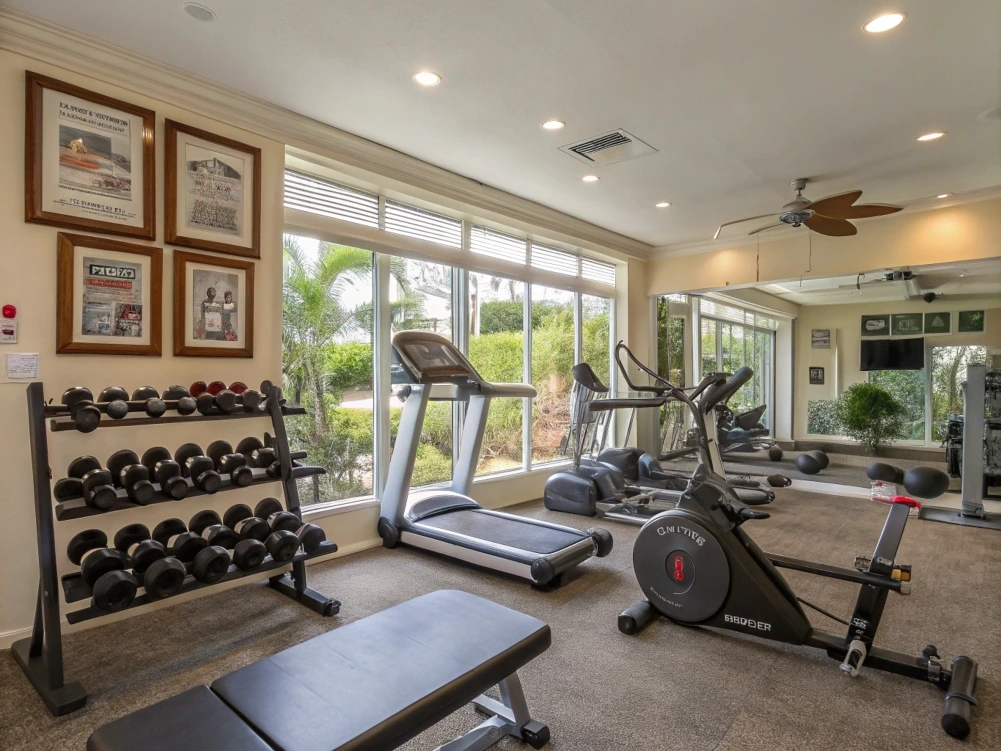When it comes to achieving fitness goals, selecting the right fitness equipment machines is crucial. Whether you’re working out at home or in a gym, the array of machines and tools can be overwhelming. This guide will walk you through the essentials, helping you understand the different types of fitness equipment and how to choose what’s best for your needs.
Types of Fitness Equipment Machines
Fitness equipment can generally be classified into two categories: Cardio Machines and Strength Training Equipment. Each serves a specific purpose, and using a mix of both ensures a well-rounded workout routine.
Cardio Machines
Cardio machines are designed to elevate your heart rate and improve cardiovascular endurance. They’re ideal for burning calories, improving heart health, and boosting stamina.
| Machine | Purpose | Target Muscles | Calories Burned (30 mins)* |
|---|---|---|---|
| Treadmill | Walking/Running | Legs, Glutes, Core | 300-450 |
| Stationary Bike | Cycling | Quads, Hamstrings, Calves | 250-400 |
| Elliptical | Low-impact Cardio | Full Body | 270-400 |
| Rowing Machine | Rowing Motion | Back, Arms, Core, Legs | 280-450 |
*Calorie burn varies based on weight and intensity.
Strength Training Equipment
Strength training equipment focuses on building muscle and improving body strength. Resistance from weights, machines, or even bodyweight helps to tone muscles, increase endurance, and promote better overall fitness.
- Free Weights
- Dumbbells and Barbells: Versatile and adjustable weights that allow you to target multiple muscle groups.
- Kettlebells: A unique, effective way to engage both strength and cardio training in one.
- Weight Machines
- Machines like leg presses, cable machines, and chest presses are ideal for beginners as they guide your form and reduce injury risk.
- Bodyweight Equipment
- Equipment like pull-up bars, dip stations, and resistance bands allows for strength building using just your body weight. It’s great for developing balance and muscle endurance.

Factors to Consider When Choosing Fitness Equipment
Not all fitness equipment is created equal, and choosing the right one depends on several factors:
1. Fitness Goals
- Weight Loss: Cardio machines like treadmills and stationary bikes are ideal for burning calories and shedding fat.
- Muscle Gain: Weight machines and free weights are more appropriate for building strength and muscle mass.
- Endurance Training: Consider using equipment like rowing machines and ellipticals for both strength and cardiovascular benefits.
2. Space and Budget
- Home Gyms: For limited space, opt for versatile equipment like dumbbells, resistance bands, and compact machines like folding treadmills.
- Gyms: With access to a broader range of equipment, focus on using machines and weights to target different muscle groups and goals.
| Equipment Type | Average Cost | Space Requirement |
|---|---|---|
| Dumbbells | $20-$200 | Minimal |
| Treadmill | $500-$2,500 | Moderate |
| Multi-Station Gym | $800-$3,000 | Large |
| Kettlebells | $30-$150 | Minimal |
3. Skill Level
- Beginner: Start with guided equipment like stationary bikes, weight machines, or resistance bands to avoid injury.
- Advanced: Free weights and compound exercises offer more versatility and challenge.
Pros and Cons of Using Machines vs. Free Weights
Both machines and free weights have their advantages and drawbacks. Here’s a quick comparison:
| Category | Pros | Cons |
|---|---|---|
| Machines | Easier to use, guided range of motion, good for beginners | Limited range of motion, fewer muscles activated |
| Free Weights | Greater muscle engagement, more versatile, improves balance | Higher risk of injury without proper form |
How to Get the Most Out of Your Fitness Equipment
To maximize the effectiveness of your workouts, follow these best practices:
- Use Proper Form: Always prioritize form over the amount of weight or speed. This reduces injury risk and ensures that the right muscles are being targeted.
- Incorporate Variety: Regularly switch up your routine to prevent plateaus and keep your workouts interesting. Try alternating between machines and free weights, or combining cardio and strength training.
- Track Progress: Use a fitness app, or maintain a workout journal to monitor your progress over time. Documenting reps, sets, and weight can help track improvements and adjust your goals accordingly.
- Warm-up and Cool Down: Always start with a light warm-up, like 5-10 minutes of cardio or dynamic stretching. After your workout, cool down with stretches to aid muscle recovery and improve flexibility.
Data-Driven Benefits of Regular Exercise
Let’s dive into some statistics to showcase the powerful benefits of incorporating fitness equipment into your routine:
Physical Benefits
- Strength Gains: Studies have shown that using strength training equipment can increase muscle mass by 1.4-2.2 kg over 10 weeks of consistent exercise.
- Weight Loss: Regular use of cardio machines can help reduce body fat by 2-3% over 12 weeks, depending on intensity and consistency.
- Improved Cardio Health: Using machines like treadmills and ellipticals for 150 minutes per week can reduce your risk of heart disease by 30%.
Mental Benefits
- Stress Reduction: Exercise boosts endorphin levels, which can help improve mood and reduce feelings of stress.
- Cognitive Function: Research suggests that regular physical activity improves memory and cognitive processing speed by up to 20%.
Conclusion: Selecting the Best Equipment for Your Fitness Journey
The key to long-term fitness success is choosing equipment that aligns with your goals, lifestyle, and skill level. Whether you’re just starting out or are a seasoned gym-goer, a balanced mix of cardio and strength training equipment will keep your workouts engaging and effective.
So, whether you prefer the controlled environment of machines or the versatility of free weights, the most important thing is to keep moving, stay consistent, and listen to your body.